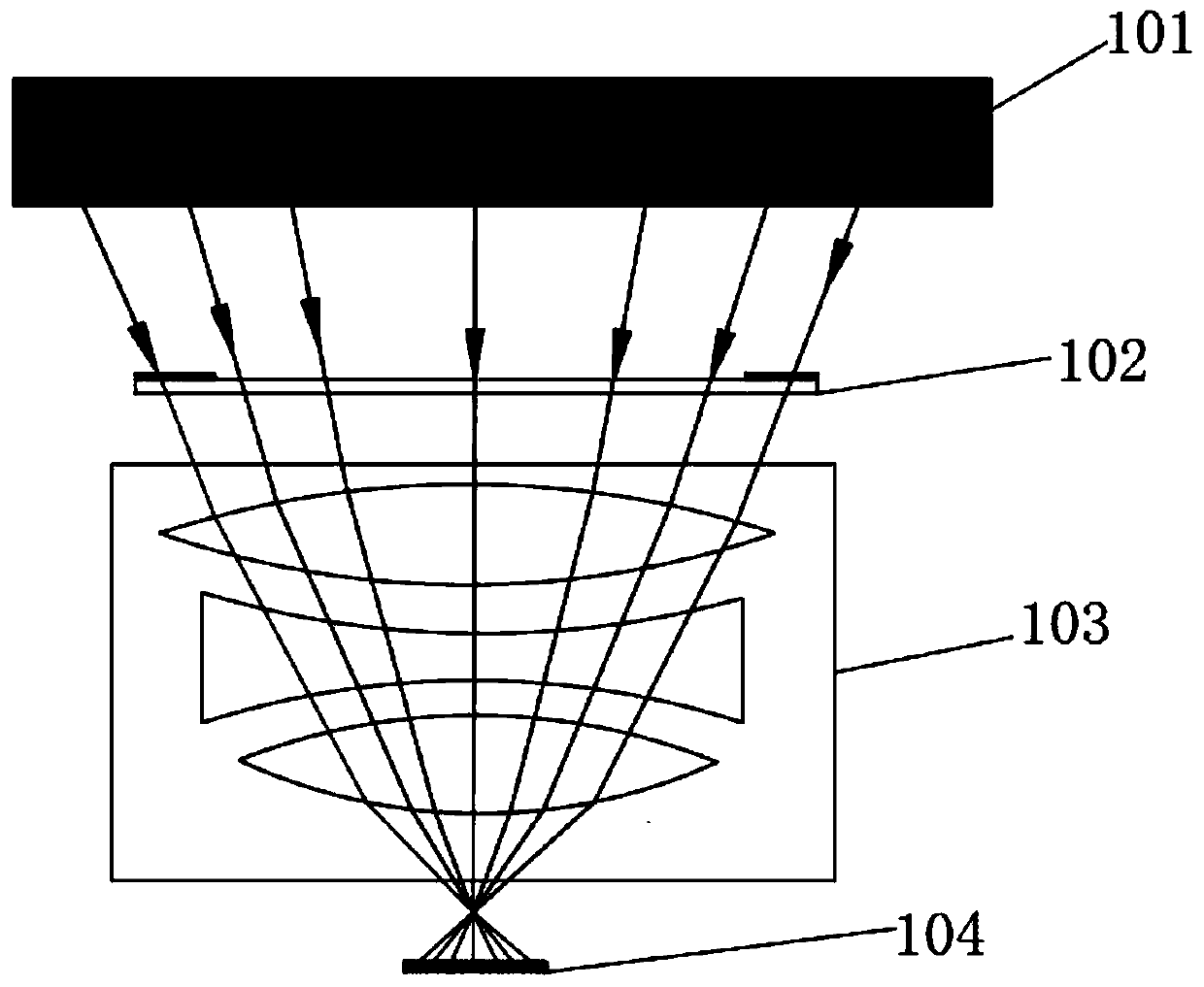Optical biological fingerprint identification structure and image edge relative illuminance improving method
A fingerprint identification and biological technology, applied in the direction of optics, optical components, characters and pattern recognition, etc., to achieve the effect of increasing the relative illuminance of the edge, increasing the relative illuminance, and increasing the amount of incoming light
- Summary
- Abstract
- Description
- Claims
- Application Information
AI Technical Summary
Problems solved by technology
Method used
Image
Examples
Embodiment 1
[0039] Please refer to figure 1 , figure 1 A cross-sectional schematic diagram of an optical biometric fingerprint identification structure provided for the invention.
[0040] This embodiment provides an optical biometric fingerprint identification structure, which captures an optical image signal, converts the optical image signal into an electrical signal, and transmits the electrical signal to the outside of the module.
[0041] In this embodiment, the optical biometric fingerprint identification structure includes an optical filter 102, an optical lens 103, a CMOS image sensor, and an image processing and identification algorithm module 104. The optical biometric fingerprint identification structure is located below the OLED display screen 101, and the optical filter 102 Located between the optical lens 103 and the OLED display 101 , the CMOS image sensor and image processing and recognition algorithm module 104 are located below the optical lens 103 .
[0042] The opti...
Embodiment 2
[0053] Compared with Embodiment 1, this embodiment is the same as Embodiment 1 except that the optical filter 102 is different.
[0054] Please refer to image 3 , image 3 It is another optical filter 102. In this embodiment, the optical filter 102 includes a filter substrate 111, and the edge position of the filter substrate 111 is sequentially provided with a first band 107, a second band 106, Any of the third band 105, the fourth band 112, and the fifth band 113, the first band 107, the second band 106, the third band 105, the fourth band 112, and the fifth band 113 Light transmittance>light transmittance of the filter substrate 111 . When installed, the first band 107, the second band 106, the third band 105, the fourth band 112, and the fifth band 113 correspond to the shadow areas of the image formed by the optical system.
[0055] Further, the light transmittance of the filter substrate 111<the light transmittance of the first zone 107<the light transmittance of the...
Embodiment 3
[0062] Please refer to Figure 5 , Figure 5 A cross-sectional schematic diagram of an optical biometric fingerprint identification structure provided for the invention.
[0063] This embodiment provides an optical biometric fingerprint identification structure, which captures an optical image signal, converts the optical image signal into an electrical signal, and transmits the electrical signal to the outside of the module.
[0064] In this embodiment, the optical biometric fingerprint identification structure includes an optical lens 103, a CMOS image sensor and an image processing and identification algorithm module 104, the optical biometric fingerprint identification structure is located below the OLED display 101, and the optical lens 103 is located between the OLED display 101 and Between the CMOS image sensor and the image processing and recognition algorithm module 104 , the optical lens 103 includes a first lens 108 .
[0065] Please refer to Figure 6 , Figure...
PUM
 Login to View More
Login to View More Abstract
Description
Claims
Application Information
 Login to View More
Login to View More - R&D
- Intellectual Property
- Life Sciences
- Materials
- Tech Scout
- Unparalleled Data Quality
- Higher Quality Content
- 60% Fewer Hallucinations
Browse by: Latest US Patents, China's latest patents, Technical Efficacy Thesaurus, Application Domain, Technology Topic, Popular Technical Reports.
© 2025 PatSnap. All rights reserved.Legal|Privacy policy|Modern Slavery Act Transparency Statement|Sitemap|About US| Contact US: help@patsnap.com



